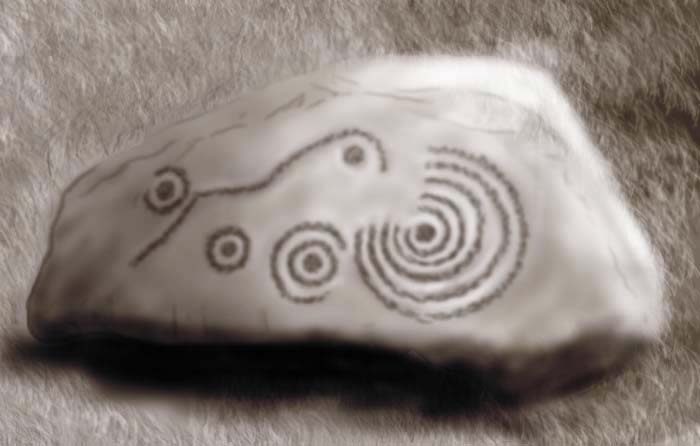
An attempt at visualising the stone in a more free-range setting

An attempt at visualising the stone in a more free-range setting

Paint has been added, in a reasonably understated fashion, to enhance the pattern.

Relocated rock art, in a church. Possible cist cover.

Explanatory note above the stone, detailing it’s relocation.
Possible cist cover, in a church.
It probably came from the ridge nearby, having been found in field clearance, following the ploughing of some mounds which may have been burial cairns. So syas Stan B, and so says a nice handpainted explanatory sheet framed above the stone.
Very weathered, the motifs have been ‘enhanced’ by some kind of paint, porobably wtaercolour, which has soaked into the carvings. It’s not in-your-face, like some painted enhancing I’ve seen, and I don’t think it detracted from my appreciation of the carvings.
It’s on the right hand side of the door as you enter. The Rev. was quite happy to allow access, and was quite chatty, being interested in the more recent archaology of the area.
Couldn’t help thinking it would feel happier outside in the fresh air though, somewhere it wouldn’t get battered by the elements, but I guess at least putting it in the church makes it easy to find.
Disabled access is fine, but if in a car, don’t come from the east, via the hamlet of Anick, as the road gets very poor and very steep. Rather come from Acomb. If on a bike, it’s worth the brief climb up to Anick, passing the ridge the stone originally came from, as it gives a bit of context to the carving.
































